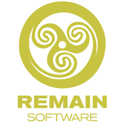The basic compare and merge functionality has always been part of the Remain Software flagship product, TD/OMS, but the new solution offers even broader support for management of third party applications. TD/OMS Fusion Pro solves the problem of managing changes coming from software vendor and retrofitting them into the customized applications.
When customers start to maintain their own version of the ERP system it slowly drifts away from the maintained version of the supplier. In many cases, retrofitting custom changes back into the supplier version proofed to be a labor intensive process which combined with the lack of commonly available testing tools, still a problem in 2015, and therefore the need to perform laborious manual integration testing led to the adage “If it ain’t broke, don’t fix it”. That’s how vendor software versions were put on shelf and how companies usually stopped upgrading their applications with changes from the supplier. When the need to move to a new version of the supplier arises (for example when the upgrade would bring significant benefits to company operations), the customers face a major challenge. That’s why we wanted to meet their needs and developed TD/OMS Fusion Pro – says Wim Jongman, managing director and CTO at Remain Software.
The Remain Software solution, TD/OMS Fusion Pro (Source Change Control), which is part of the TD/OMS Application Lifecycle Management framework, allows comparison of complete libraries of sources. The process is divided in two steps. After isolating user and/or supplier changes from the base the user gets a clear vision on the differences. From this point on a merge between original and changed source can be done. The first annotated merged version is a source which can be compiled but it has all the details of the merge in it so that the developer can see exactly what happened, and revert or replace older lines. The source can also be left annotated. If a problem in test or production is found, the annotations can help developers to find the cause of the error. Finally a command is run to clean the annotations, leaving the user with the final source. After the merge, users can test its correctness by compiling the sources which will confirm if the merge was a success from a technical point of view and if the application runs correctly.
If the modified application including retrofitted changes runs in the bigger environment, TD/OMS and its graphical impact analysis module can show how the different components in the system interact; what files are read by which programs, or what “foreign” logicals are created over suppliers physical. Therefore, TD/OMS Fusion Pro as a part of TD/OMS allows the user to conduct a fast, effortless, stable and successful upgrade of the application, that will work properly in the entire system.
‘Not alone the automatic retrofitting of vendor changes can be done with Fusion Pro, also the use case where developers work on different versions based on the same ancestor, so called “dual maintenance” or “branches”’
TD/OMS Fusion Pro can be used as a standalone source compare and merge product or as a part of Remain’s IBM i Application Lifecycle Management framework, TD/OMS.
Read more about TD/OMS:
https://remainsoftware.com/software-change-management












 Business users want new applications now. Market and regulatory pressures require faster application updates and delivery into production. Your IBM i developers may be approaching retirement, and you see no sure way to fill their positions with experienced developers. In addition, you may be caught between maintaining your existing applications and the uncertainty of moving to something new.
Business users want new applications now. Market and regulatory pressures require faster application updates and delivery into production. Your IBM i developers may be approaching retirement, and you see no sure way to fill their positions with experienced developers. In addition, you may be caught between maintaining your existing applications and the uncertainty of moving to something new. IT managers hoping to find new IBM i talent are discovering that the pool of experienced RPG programmers and operators or administrators with intimate knowledge of the operating system and the applications that run on it is small. This begs the question: How will you manage the platform that supports such a big part of your business? This guide offers strategies and software suggestions to help you plan IT staffing and resources and smooth the transition after your AS/400 talent retires. Read on to learn:
IT managers hoping to find new IBM i talent are discovering that the pool of experienced RPG programmers and operators or administrators with intimate knowledge of the operating system and the applications that run on it is small. This begs the question: How will you manage the platform that supports such a big part of your business? This guide offers strategies and software suggestions to help you plan IT staffing and resources and smooth the transition after your AS/400 talent retires. Read on to learn:
LATEST COMMENTS
MC Press Online